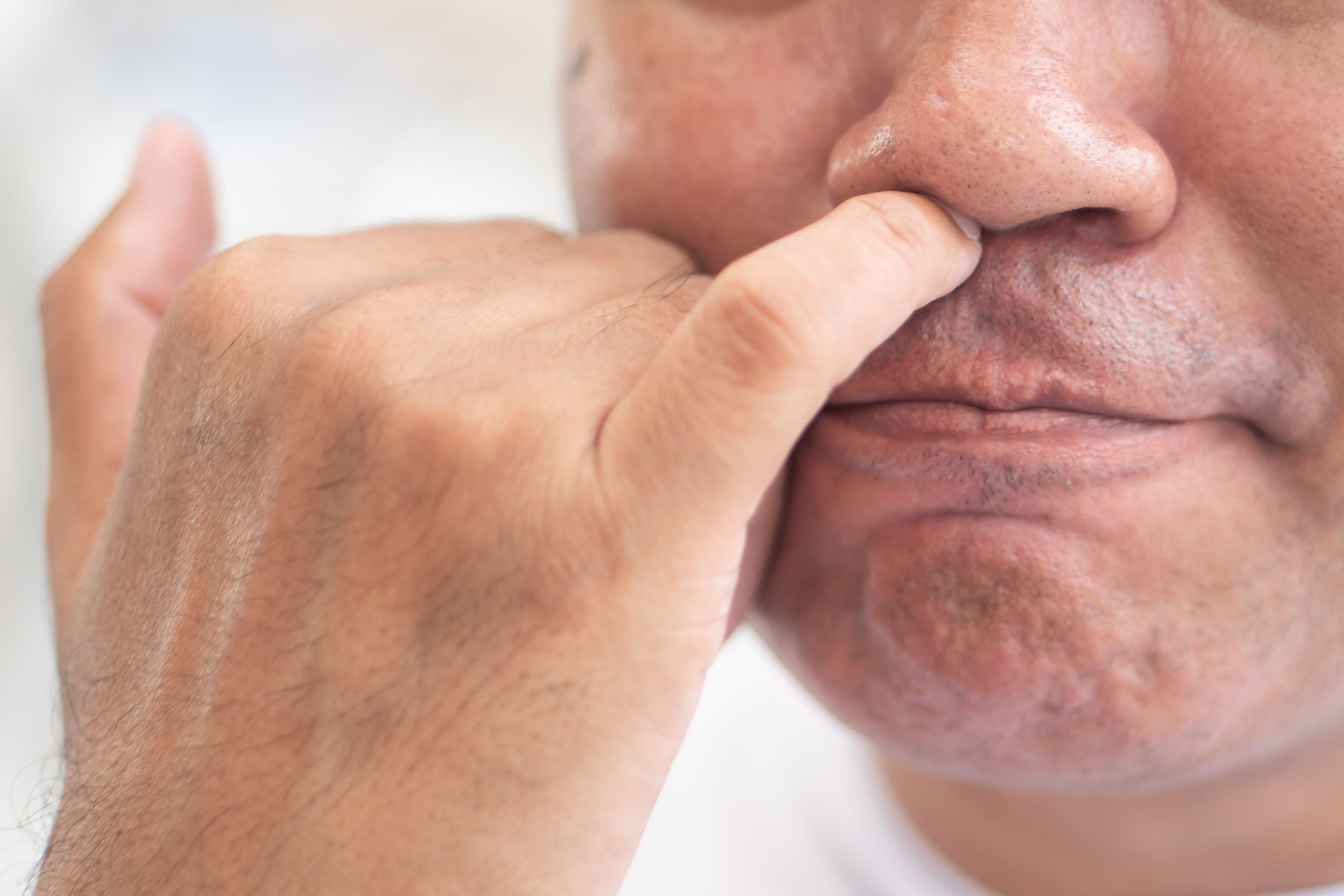News
Article
Nose Picking Among Health Care Workers Associated With Increased Risk of SARS-CoV-2
Author(s):
Study results showed no significant association between those who bite their nails and SARS-CoV-2 infection, in addition to a lower rate of infection for those who wear glasses compared to those who don’t wear glasses.
Nose picking among hospital health care workers (HCW) is associated with an increased risk of contracting a SARS-CoV-2 infection, according to the results of a study published in the Public Library of Science ONE.
Image credit: 9nong - stock.adobe.com

After the SARS-CoV-2 pandemic began to spread worldwide toward the end of 2019, preventive measures were introduced worldwide to help reduce physical contact and transmission of the virus. Guidelines in health care facilities recommended personal protective equipment (PPE) to prevent transmission.
However, HCW are more likely to contract SARS-CoV-2 infection (hazard ratio [HR] 3.92; 95% CI, 1.79-8.62), with risk factors including insufficient hand hygiene and lack of PPE use. The study authors hypothesized that regular nose picking—which is common across the adult population—in an environment with high levels of circulating virus allows the virus to transfer to the nasal or oral mucosa.
The cohort of patients examined in the study was set up in March 2020, and participants were categorized as either working in COVID-19 patient care, working in non-COVID-19 patient care, or not working in patient care. The primary outcome was SARS-CoV-2 infection, defined as a self-reported positive NAAT result and/or the presence of antibodies.
A total of 404 participants agreed to give written informed consent for the study, of whom 219 HCWs (52.4% of 404 participants) completed the survey regarding physical and behavioral features of interest. Habitual nose picking, which varied from monthly, weekly, to daily, was disclosed by 185 (85%) respondents.
In terms of frequency, physicians picked their noses the most (residents: 100% and specialists: 91%), followed by support staff (86%) and nurses (80%). Nail biting (monthly, weekly, daily, or hourly) was less frequently reported (33%), whereas 158 (72%) participants reported wearing glasses and 18 of 52 males (35%) reported having a beard.
By October 2020, 34 of 219 HCW (16%) were seropositive for SARS-CoV-2, and only 2 (6%) of those seropositive participants never picked their nose. Nine (27%) participants reported monthly nose picking, 12 (35%) reported weekly, and 11 (32%) reported daily.
The results of the study indicated an increased risk of SARS-CoV-2 infection for nose pickers (COVID-19 rate 32 of 185; 17.3%) in comparison to those who refrained from nose picking (2 of 34, 5.9%; OR 3.80; 95% CI, 1.05-24.52). All nose picking groups had higher infection rates compared to the non-nose picking group. The only significant difference in subgroups was between those reporting weekly nose picking and those who never picked their nose.
There was no significant association between nail biting and the incidence of SARS-CoV-2 infection (COVID-19 rate in nail biters, 10 of 72, 13.9% versus non-nail biters, 24 of 147, 16.3%; OR 0.97; 95% CI, 0.41-2.18). Furthermore, there was no association between having a beard and the incidence of COVID-19 in men, and glass-wearing respondents contracted SARS-CoV-2 infection at a lower rate compared to those without glasses.
These findings emphasize the importance of the nasal cavity as a main transit port for SARS-CoV-2, as nose picking had not been previously reported as a risk factor for contracting the virus, the study authors discussed.
Additionally, the results of the study highlight the potential of nose picking HCW to contaminate the work environment, which could lead to further transmission. The investigators noted the important problem of SARS-CoV-2 transmission from HCW-to-HCW in hospitals, and discussed the possibility that the role of nose picking is underestimated in that regard.
Strengths of the study include the prospective longitudinal serological sampling that was undergone from the start of the pandemic, which allowed for the adjustment of relevant confounding factors, in addition to the lack of prior studies specifically centered around nose picking, according to the study authors.
The investigators also identified some limitations to their study. They wrote that the non-statistically significant difference in SARS-CoV-2 infection incidence between HCW wearing glasses and those who did not may have been caused by an insufficient sample size. Further, the researchers did not ask whether HCWs picked their noses on the work floor or about their variability in nose picking.
“Considering guideline recommendations include e.g. illustrations of appropriate masks for those with facial hair despite the lack of any real-life evidence, nose picking deserves more consideration as a potential health hazard, and explicit recommendations against nose picking should be included in the same SARS-CoV-2 infection prevention guidelines,” the study authors concluded.
Reference
Lavell AHA, Tijdink J, Buis DTP, et al. Why not to pick your nose: association between nose picking and SARS-CoV-2 incidence, a cohort study in hospital health care workers. PLOS ONE. 2023;18(8)e0288352. doi:10.1371/journal.pone.0288352






